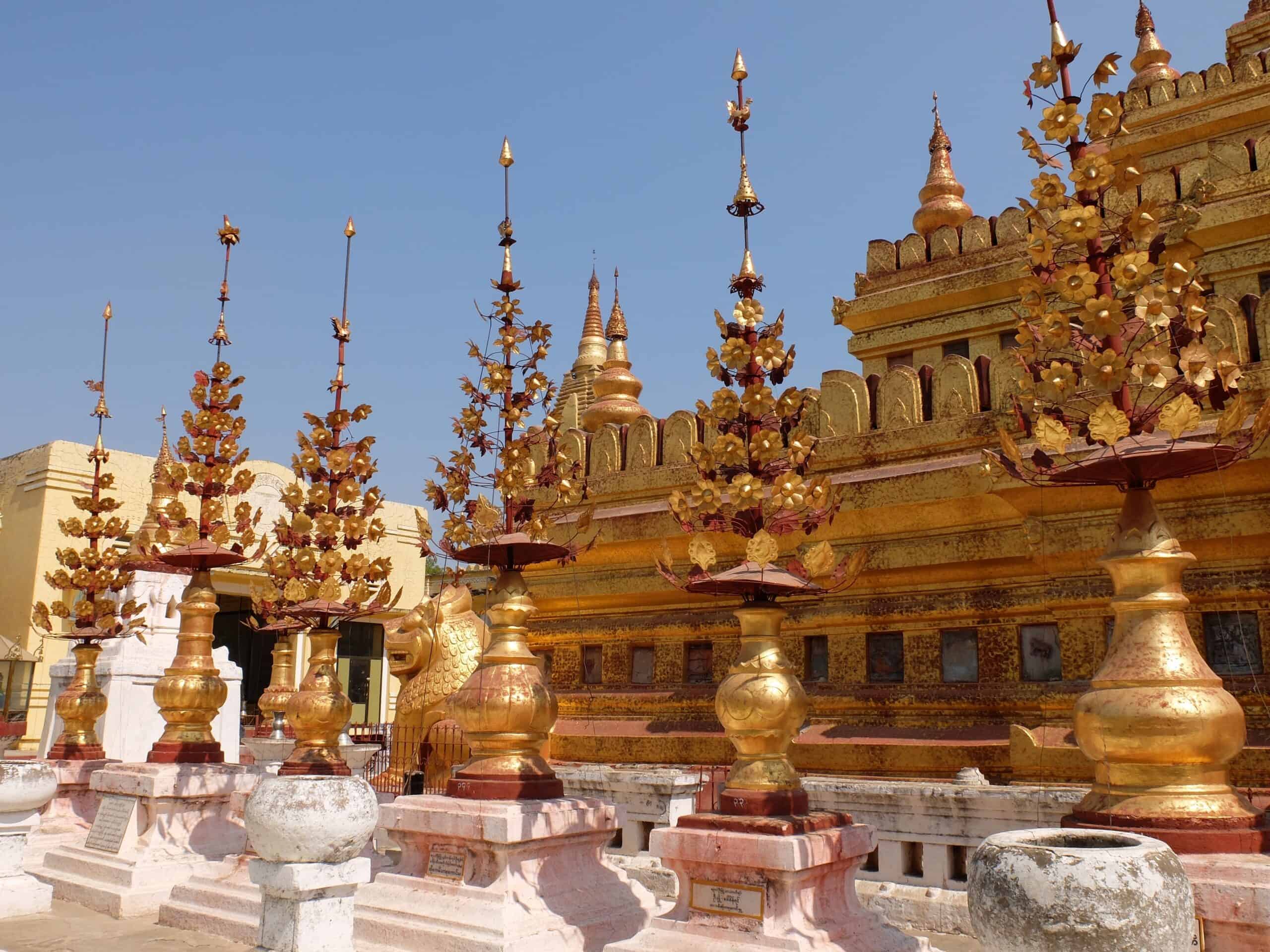Theravada Buddhism, revered as the oldest surviving school of Buddhism, holds steadfast to the preservation of the Buddha’s original teachings, meticulously recorded in the Pali Canon. Amidst the rich tapestry of Buddhist architecture, three distinct structures stand out:
- Stupas, characterized by their bell-shaped design, enshrine sacred relics or scriptures within their solid structures, shielding them from view and safeguarding them from vandalism.
- Temples, akin to places of worship akin to churches, provide open interiors for worship and contemplation, often adorned with revered Buddha images as focal points of devotion.
- Monasteries, serving as sanctuaries for monks, offer living quarters and meditation cells, fostering an environment conducive to spiritual growth and study.
In Thailand, Laos, and Cambodia, the landscape is punctuated by wats (Buddhist temples) and stupas, serving as prominent symbols of Buddhist devotion. In Laos, wats are referred to as “vats,” while in Myanmar, they are commonly known as “temples” in Western guidebooks.
Symbolizing the Buddhist cosmology, Theravada stupas embody the universe’s structure, with solid domes representing the dome-shaped sky enclosing the world-mountain. These architectural marvels, often inspired by the staff and begging bowl of the wandering Buddha, hold significance in Buddhist practice and symbolism.
Within these sacred spaces, Buddhist temples house numerous Buddha statues, surrounded by offerings of incense, fruit, and flowers, as expressions of devotion. Visitors are encouraged to observe traditional customs when interacting with monks and nuns, such as refraining from eating in their presence during fasting periods and using the right hand for giving or receiving items.
Furthermore, women should be mindful of additional rules regarding interactions with monks, such as avoiding physical contact and practicing modest behavior. Demonstrating respect through traditional gestures like the wai in Thailand or som pas in Cambodia fosters cultural understanding and appreciation.
To support the upkeep of these sacred sites, visitors are encouraged to make donations, which play a vital role in sustaining temple operations. By embracing these customs and gestures of respect, visitors can deepen their connection to Theravada Buddhism while honoring its rich heritage and traditions.
10 Rules on How to Behave in a Temple
- Dress Modestly: Visitors should dress modestly when entering Theravada temples, covering shoulders and knees out of respect for the sacred space.
- Remove Footwear: Before entering the temple or any designated areas, remove your footwear as a sign of reverence and cleanliness.
- Maintain Silence: Maintain a quiet and respectful demeanor within temple grounds, refraining from loud conversations or disruptive behavior.
- Observe Rituals: Respect temple rituals and ceremonies by observing from a respectful distance if you are not directly participating.
- Show Respect to Monks: Show respect to monks by refraining from physical contact, standing when they enter the room, and avoiding sitting higher than them.
- Avoid Pointing Feet: When sitting, avoid pointing your feet towards Buddha images, monks, or sacred objects, as this is considered disrespectful.
- Mindful Photography: If photography is permitted, be mindful of your surroundings and avoid taking photos of monks without permission or during ceremonies.
- No Eating Inside: Refrain from eating or drinking inside temple buildings, especially during designated fasting periods observed by monks.
- Proper Offerings: If making offerings to the Buddha or monks, do so with your right hand and avoid touching the offerings once they have been placed.
- Follow Instructions: Follow any instructions or guidelines provided by temple staff or signage, ensuring a respectful and harmonious visit for all.



